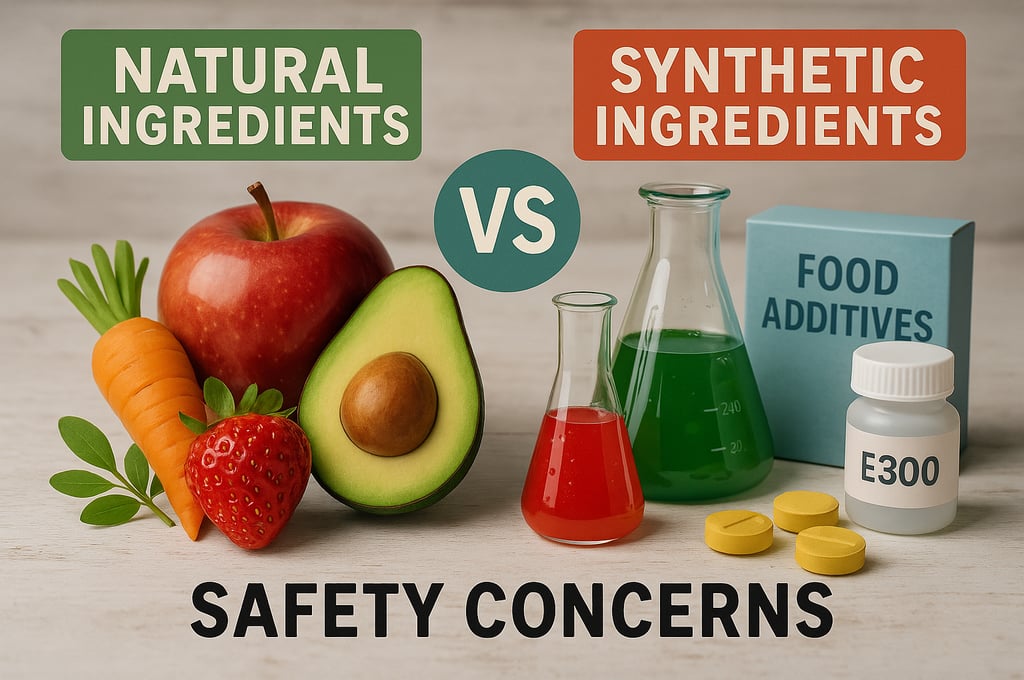
Natural ingredient is not always safe, so is synthetic one safer?
Natural ingredients don’t necessarily mean safter; however, they offer better safety assurances by avoiding harmful byproducts and impurities inherent to synthetic processes
2 min read


Synthetic vs natural
Recently there have been efforts to equate synthetic ingredients strictly with petroleum-based ingredients. While petroleum-based ingredients are a type of synthetic ingredient, not all synthetic ingredients are from petroleum. In fact, many are derived from plant-based sources, with C-14 analysis indicating nearly 100% biocarbon content.
A notable example is sucralose; an artificial sweetener chemically synthesized from sugar with 100% biocarbon content. Sucralose has not been found in nature. In addition, the chemical process also produces many byproducts and impurities such as dichloro sucrose, sucralose isomers, tetrachlorosucrose, esters, and catalyst and heavy metal residues.
Someone may bring up the concept of “natural identical”. However, natural identical is not a legal term in either EU or USA and most countries’ food labeling, natural identical ingredients cannot be labelled as “natural ingredients” if they are chemically synthesized.
For instance, sorbic acid occurs naturally, while potassium sorbate or sorbic acid, used in many foods and beverages, is synthetic.
There are arguments that natural ingredients are not inherently safe, citing the presence of natural toxins. Therefore, some claim that identical compounds, regardless of their origin, should be viewed the same. This perspective overlooks critical evidence. The distinction between natural and synthetic ingredients is not merely philosophical but is rooted in measurable scientific differences, particularly concerning byproducts and impurities.
To illustrate the difference and potential safety risks, we can use a well-known compound, vanillin as an example. Vanillin can be produced through plant extraction, fermentation (biosynthesis) and chemical synthesis. The former two methods are considered natural.
Chemical synthesis typically involves catechol or guaiacol routes, the byproducts and impurities include potentially toxic aromatic compounds, sulfur- containing compounds, carcinogenic chlorobenzene or halogenated compounds, residual organic solvents, and residual heavy metals from catalysts
Fermentation mimics the natural process of vanillin production in vanilla beans, which have been safety consumers for centuries. The byproducts and impurities are very similar to plant extracts, with no toxic or carcinogenic compounds reported.
Given that achieving 100% purity is not feasible in scientific practices, the byproducts and impurities differentiate synthetic vanillin from natural vanillin in terms of safety. For example, Eli Lilly & Company, a renowned multinational pharmaceutical corporation, in 2024 had to recall its duloxetine drugs due to the carcinogenic impurity N-nitroso-duloxetine, highlighting highlight the unpredictability and heightened risks associated with chemical synthesis.
Calcium propionate, a popular mold inhibitor used in bakery, is chemically synthetized by reacting calcium hydroxide with propionic acid. This process generally produces no harmful byproducts or impurity. However, examining the production of propionic acid reveals different results t. The propionic acid is traditionally synthesized by hydrocarboxylation of ethylene or aerobic oxidation of propionaldehyde, in the presence of expensive catalysts like nickel carbonyl, cobalt or manganese. Each process has its own set of byproducts and impurities, some of them can be toxic, such as toxic heavy metals from catalyst and propaneperoxoic acid, a highly effective biocide not allowed to use in food. A safer, natural alternative to calcium propionate is available: https://www.sunsonbiotech.com/food-preservation
In conclusion, natural ingredients don’t necessarily mean safter; however, they offer better safety assurances by avoiding harmful byproducts and impurities inherent to synthetic processes.

